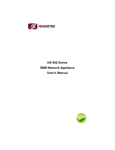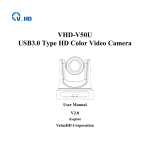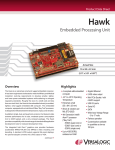Download NA342 User`s Manual VA1
Transcript
NA342 Network Appliance User’s Manual Disclaimers This manual has been carefully checked and believed to contain accurate information. AXIOMTEK Co., Ltd. assumes no responsibility for any infringements of patents or any third party’s rights, and any liability arising from such use. AXIOMTEK does not warrant or assume any legal liability or responsibility for the accuracy, completeness or usefulness of any information in this document. AXIOMTEK does not make any commitment to update the information in this manual. AXIOMTEK reserves the right to change or revise this document and/or product at any time without notice. No part of this document may be reproduced, stored in a retrieval system, or transmitted, in any form or by any means, electronic, mechanical, photocopying, recording, or otherwise, without the prior written permission of AXIOMTEK Co., Ltd. Copyright 2014 AXIOMTEK Co., Ltd. All Rights Reserved December 2014, Version A2 Printed in Taiwan ii Safety Approvals CE Marking FCC Class B FCC Compliance This equipment has been tested and complies with the limits for a Class B digital device, pursuant to Part 15 of the FCC Rules. These limits are designed to provide reasonable protection against harmful interference in a residential installation. If not installed and used in accordance with proper instructions, this equipment might generate or radiate radio frequency energy and cause harmful interference to radio communications. However, there is no guarantee that interference will not occur in a particular installation. If this equipment does cause harmful interference to radio or television reception, which can be determined by turning the equipment off and on, the user is encouraged to try to correct the interference by one or more of the following measurers: Reorient or relocate the receiving antenna. Increase the separation between the equipment and receiver. Connect the equipment into an outlet on a circuit different from that to which the receiver is connected. Consult the dealer or an experienced radio/TV technician for help. Shielded interface cables must be used in order to comply with emission limits. iii Safety Precautions Before getting started, read the following important cautions. 1. Be sure to ground yourself to prevent static charge when installing the internal components. Use a grounding wrist strap and place all electronic components in any static-shielded devices. Most electronic components are sensitive to static electrical charge. 2. Disconnect the power cords from the NA342 before making any installation. Be sure both the system and the external devices are turned OFF. Sudden surge of power could ruin sensitive components. Make sure the NA342 is properly grounded. 3. Do not open the system’s top cover. If opening the cover for maintenance is a must, only a trained technician is allowed to do so. Integrated circuits on computer boards are sensitive to static electricity. To avoid damaging chips from electrostatic discharge, observe the following precautions: Before handling a board or integrated circuit, touch an unpainted portion of the system unit chassis for a few seconds. This will help to discharge any static electricity on your body. When handling boards and components, wear a wrist-grounding strap, available from most electronic component stores. Trademarks Acknowledgments AXIOMTEK is a trademark of AXIOMTEK Co., Ltd. IBM, PC/AT, PS/2, VGA are trademarks of International Business Machines Corporation. ® ® Intel and Pentium are registered trademarks of Intel Corporation. MS-DOS, Microsoft C and QuickBASIC are trademarks of Microsoft Corporation. Other brand names and trademarks are the properties and registered brands of their respective owners. iv Table of Contents Safety Approvals .................................................................................................... iii Safety Precautions ................................................................................................. iv CHAPTER 1 INTRODUCTION ........................................................................ 1 1.1 1.2 1.3 1.3.1 1.3.2 1.4 1.5 1.5.1 1.5.2 General Description ............................................................................ 1 Features ............................................................................................... 1 Specifications...................................................................................... 2 System ............................................................................................................... 2 Mechanical / Environmental ............................................................................ 3 Dimensions and Outlines ................................................................... 4 I/O Outlets............................................................................................ 5 Front Panel ........................................................................................................ 5 Rear Panel ......................................................................................................... 6 CHAPTER 2 HARDWARE DESCRIPTION............................................................ 7 2.1 2.2 2.3 2.4 2.5 2.5.1 2.5.2 2.5.3 2.5.4 2.5.5 2.5.6 2.6 2.6.1 2.6.2 2.6.3 2.6.4 2.6.5 2.6.6 2.6.7 2.6.8 2.6.9 2.6.10 2.6.11 2.6.12 2.6.13 2.6.14 2.6.15 2.6.16 2.6.17 Checklist .............................................................................................. 7 Memory Module (SODIMM) ................................................................. 7 Hard Disk Installation (2.5’) ................................................................ 7 Board Layout ....................................................................................... 8 Jumper Settings .................................................................................. 9 Auto Power Button Mode Selection (JP2) .................................................... 10 RTC Well Rest Selection(JP3) ....................................................................... 10 Restore BIOS Optimal Defaults Jumper (JP4) ............................................. 10 Compact Flash Voltage Selection Jumper (JP5) ......................................... 11 LAN Bypass Control Jumper (JP9, JP10, JP11) .......................................... 11 TACT SW1 Selection (JP13)........................................................................... 12 Connectors ........................................................................................ 13 SIM Socket (CN2/CN12) .................................................................................. 13 MINI PCIe SLOT 1 (CN4) ................................................................................. 14 MINI PCIe SLOT 2 (CN11) ............................................................................... 15 VGA Connector (CN5) .................................................................................... 16 LCM Connector (CN6) .................................................................................... 16 SATA Power Connector (CN7) ....................................................................... 16 DC-In Power Jack (CN9) ................................................................................. 17 DC12V Power Switch connector (ATX1) ....................................................... 17 Power Input 12V Connector (AXT3) Optional .............................................. 17 Serial Port1 for Console (COM1) ................................................................... 17 Serial Port2 Connector (COM2) ..................................................................... 18 LAN1 ~ LAN4 Connector (LAN1~4) ............................................................... 18 USB Port Connector (USB1) .......................................................................... 19 Digital I/O Port Connector (DIO1) for optional ............................................. 19 Serial ATA Connectors (SATA1, SATA2) ..................................................... 20 Fan Connectors (FAN1, FAN2) ...................................................................... 20 Front Panel Bezel Connector (JP1) ............................................................... 21 CHAPTER 3 AMI BIOS SETUP UTILITY ............................................................. 23 3.1 3.2 Starting .............................................................................................. 23 Navigation Keys ................................................................................ 23 v 3.3 3.4 3.5 3.6 3.7 3.8 Main Menu ......................................................................................... 24 Advanced Menu ................................................................................ 25 Chipset Menu .................................................................................... 32 Boot Menu ......................................................................................... 33 Security Menu ................................................................................... 34 Exit Menu ........................................................................................... 35 APPENDIX A LAN BYPASS CONFIGURATION ............................................... 37 About LAN Bypass ........................................................................................... 37 LAN Bypass Register Configuration ............................................................... 38 APPENDIX B WDT TIMER FOR SYSTEM RESET ............................................ 43 WDT (Watchdog Timer) .................................................................................... 43 APPENDIX C WARNING ........................................................................................ 45 vi NA342 Series Network Appliance User’s Manual CHAPTER 1 INTRODUCTION This chapter contains general information and detailed specifications of the NA342 Network Appliance Server. Chapter 1 contains the following sections: 1.1 General Description Features Specifications Dimensions and Outlines I/O Outlets General Description The NA342 is a desktop network security hardware platform for VPN, firewall and other network security applications, which can support Intel® ATOM E38xx family &J1900 (formerly codenamed “Bay Trail”). This platform supports DDR3L 1066 memory with single channel up to maximum 8 GB for one SODIMM slot. In the meantime, the platform also can support up to 6 Gigabit LAN ports which can provide best throughput. For the purpose to store event log data, it can deploy one CF card. This platform can be easily enabled through application programs to make a user-friendly appliance for customers, and provide the highest ever performance of encryption and decryption. 1.2 Features Low power and high performance for network security field applications. NA342 series ® supports Intel ATOM Bay Trail processors 1U desktop design (44mm x 231mm x 152mm) Embedded Intel® Atom™Bay Trail Processor Supports up to 8GB DDR3L 1333 memory Supports up to 6 Gigabit LAN ports Introduction 1 NA342 Series Network Appliance User’s Manual 1.3 Specifications 1.3.1 System System CPU BIOS Network Interface Four 10/100/1000Mbps Ethernet (Intel® i211) as default. Six ports for optional LAN by pass support latch relay for optional. Watchdog Timer One for lan by pass : 7levels,1-64 seconds One for system reset : 255 levels,1-255 sec USB 1 x 12V/5A power adapter OS Compatibility 2 RS-232 Console port is the front side(RJ-type) Power Two USB ports in the rear side(1XUSB2.0,1XUSB3.0) Console One CF socket. Network Interface One DDR3L 1333 SODIMM up to 8 GB Compact Flash AMI 16Mbit PnP Flash BIOS with function of BIOS redirected to COM port System Memory Intel® Atom Bay Trail processor onboard.(J1900 as default) Linux kernel 2.6 or 3.x Introduction NA342 Series Network Appliance User’s Manual 1.3.2 Mechanical / Environmental Form Factor LED Power, HDD, Link/Act with transfer rate LAN by pass LED and programmable LED Operation Temperature Steel Dimensions 10% - 95% RH, non-condensing Chassis Material -20°C ~ 70°C (-4°F ~ 158°F) Humidity 0°C ~ 40°C (32°F ~ 104°F) Storage Temperature 1U Desktop 44mm (1.73”) (H) x 231.9m (9.09”) (W) x 152m (5.98) (D) Weight (Net/Gross) 1 .3g /2.3g NOTE: All specifications and images are subject to change without notice. Introduction 3 NA342 Series Network Appliance User’s Manual 1.4 4 Dimensions and Outlines Introduction NA342 Series Network Appliance User’s Manual 1.5 I/O Outlets Locate the front panel I/O outlets on the NA342 Series server to connect serial and Ethernet interface devices. 1.5.1 Front Panel LAN By-Pass LED (L) While running the LAN By-Pass function, the LED always lights up. Programmable LED( G) A sample code will be provided that allow users to define their own function. NOTE: If you need sample codes please contact our FAE directly, and they are for reference purposes only. Power LED It will be lighting when the server is powered on to perform diagnostic tests and check a proper operation. LAN Link LED It will be lighting when a twisted pair is connected to another Ethernet device on the port. It shows network transfer rate while making a connection. LAN Activity LED It will be lighting when the server is transmitting or receiving a packet through the twisted pair ports. HDD LED The LED flashes when transmitting or receiving any signals. Introduction 5 NA342 Series Network Appliance User’s Manual 1.5.2 Rear Panel USB Ports Reset/Default Switch Power Switch 12V/5A DC Power Input LAN Ports Console Port Reset Switch It is for reset the system to reboot your computer instead of turning OFF the power switch. It is a better way to reboot your system for a longer life of the system’s power supply. Default Switch The sample code will be provided that allows users to define their own function. For example, when the system has any problems, this switch can support to reset it to the customer’s OS default settings if our customer’s OS supports this application. NOTE: If you need sample codes please contact our FAE directly, and they are for reference purposes only. Console port RS-232 Console port is for the command of line interface and of diagnostic support by P.O.S.T (Power on Self Test). Active LED (Single color)for LAN port #1, port#2, port#3, port#4 1. 2. 3. Link LED for LAN port #1, port#2, port#3, port#4 1. 2. 3. 4. 5. 6 The orange LED is on when the LAN port connection is working. The LED flashes when transmitting or receiving any signals to or from the appliance. The LED is dark when the appliance is off. The double-color LED light indicates 10/100/1000Mbps transfer rate. When the amber-color LED light is radiating, it should be 1000Mbps transfer rate at this moment. When the green-color LED light is radiating, it should be 100Mbps transfer rate at this moment If the LED is dark and Link/Active LED is light on or flashing, it should be 10Mbps transfer rate. When this LED and Link/Active LED both are dark. No netwo rking devices are attached Transfer Rate LED Light Color 10Mbps Dark 100Mbps Green 1000Mbps Amber Introduction NA342 Series Network Appliance User’s Manual CHAPTER 2 HARDWARE DESCRIPTION The NA342 Series are convenient for your various hardware configurations. The chapter 2 will help you get familiar with the hardware. 2.1 Checklist The package bundled with your NA342 Series should contain the following items DC Power Adapter x 1,Power cord x 1 Mounting screws for disk drive Cable kits (1 x SATA cable, 1 x SATA power cable) Plastic stand for stack–up x 4 If you cannot find this package or any items are missing, please contact AXIOMTEK distributors immediately. If you order any optional components, the package might contain those additional hardware or documents accordingly. 2.2 Memory Module (SODIMM) The main board supports one DDR3L 1333 SODIMM socket. Maximum memory capacity is up to 8 GB Non-ECC / Non-butter memory The following steps show you how to install the memory modules: 1. Push down each side of the SODIMM socket. 2. Align the memory module with the socket that notches of memory module must match the socket keys for a correct installation. 3. Install the memory module into the socket and push it firmly down until it is fully seated. The socket latches are levered upwards and clipped on to the edges of the DIMM. 4. Install any remaining SODIMM modules. 2.3 Hard Disk Installation (2.5’) When you install 2.5’HDDif the height is 9mm, we suggest fastening the screws at both of right and left side. If the height is 15mm, please fasten the screws at bottom of the bracket. Hardware Description 7 NA342 Series Network Appliance User’s Manual 2.4 Board Layout Component Side 8 Hardware Description NA342 Series Network Appliance User’s Manual 2.5 Jumper Settings This section provides the information about jumpers and connectors of NA342 Series. Proper jumper settings configure the main board in this appliance to meet your application purpose. We are herewith listing a summary table of all jumpers and default settings for onboard devices, respectively. Jumper Definition Jumper Settings Auto Power Button Mode Selection Short (1-2) Auto Power On (Default) JP2 Short (2-3) Power on By Power button Short(1-2) Normal (Default) Short(2-3) RTC Well Rest Short (1-2) Normal (Default) Short (2-3) Restore BIOS optimal defaults Short (1-2) +3.3V (Default) Short (2-3) +5V RTC Well Reset Function JP3 Restore BIOS optional defaults JP4 JP5 Restore BIOS optional defaults Compact Flash Voltage Selection JP9 Short(1-2) JP10 Short(1-2) LAN Bypass same as Power Off status JP11 Short(1-2) JP9 JP10 LAN By-Pass Trigger when Power On JP9 Short(1-2) JP10 Short(1-2) LAN Bypass Disable(Default) JP11 Short(2-3 JP11 JP9 Short(2-3) JP10 Short(1-2) LAN Bypass Enable JP11 Short(2-3) JP13 TACT SW1 Lower Button Function Selection Hardware Description Short (1-2) Power On/Off Short (2-3) Reset (Default) Short (4-5) GPIO 9 NA342 Series Network Appliance User’s Manual 2.5.1 Auto Power Button Mode Selection (JP2) Description Function Jumper Setting Auto Power On (Default) 3 2 1 Power on By Power button 3 2 1 Auto Power Button Mode Selection 2.5.2 RTC Well Rest Selection(JP3) Description Function Jumper Setting JP3 3 2 1 Normal (Default) RTC Well Rest Selection JP3 3 2 1 RTC Well Rest 2.5.3 Restore BIOS Optimal Defaults Jumper (JP4) Description Function Jumper Setting JP4 Normal (Default) Restore BIOS optimal defaults JP4 Restore BIOS defaults 10 3 2 1 3 2 1 Hardware Description NA342 Series Network Appliance User’s Manual 2.5.4 Compact Flash Voltage Selection Jumper (JP5) Description Function Jumper Setting +3.3V (Default) 3 2 1 +5V 3 2 1 Compact Flash Voltage Selection 2.5.5 LAN Bypass Control Jumper (JP9, JP10, JP11) Use these jumpers to select the LAN Bypass Function. Description Function Jumper Setting JP9 LAN Bypass as same as Power Off status LAN Bypass Trigger When Power On LAN Bypass Disable(Default) LAN Bypass Enable 1 2 3 JP10 1 2 3 JP11 1 2 3 JP9 JP10 JP11 1 2 3 1 2 3 1 2 3 JP9 JP10 JP11 1 2 3 1 2 3 1 2 3 NOTE: When the system is turned on, you can select LAN bypass function by Jumper and Bios when power on state , when enter the OS,you can select LAN pass function at power on/ off state by software ,the detail information please refer to the appendix A. Hardware Description 11 NA342 Series Network Appliance User’s Manual 2.5.6 TACT SW1 Selection (JP13) Use this jumper to select the TACT SW1 Function. Description Function Jumper Setting 5 4 3 2 1 Power On/Off TACT SW1 Lower Button Function Selection Reset (Default) GPI 5 4 3 2 1 5 4 3 2 1 NOTE: If you need GPI sample codes please contact our FAE directly, and they are for reference purposes only. 12 Hardware Description NA342 Series Network Appliance User’s Manual 2.6 Connectors Connectors connect the board with other parts of the system. Loose or improper connection might cause problems. Make sure all connectors are properly and firmly connected. Here is a summary table shows you all connectors on the main board. Connectors Label SIM Socket CN2/CN12 MINI PCIe SLOT 1 Half CN4 MINI PCIe SLOT 2 Normal CN11 VGA Connector CN5 LCM Connector CN6 SATA Power Connector CN7 DC12V Power Connector CN9 DC12V Power Switch ATX1 Power Input 12V Connector for NA-342R ATX3 Serial port1 RJ-type (External) COM1 Serial port2 Box Header 2.0 (Internal) COM2 LAN1 ~ LAN6 Connector LAN1-6 USB 2.0/3.0 Connector USB1 Digital I/O Port Connector DIO1 Serial ATA Connector (optional) SATA1 Serial ATA Connector SATA2 AUX FAN Connector FAN1 System FAN Connector FAN2 Front Panel Bezel Connector JP1 2.6.1 SIM Socket (CN2/CN12) In order to work properly, the SIM Card must be used together with Mini Card which is inserted to socket CN2 It is mainly used in 3G wireless network application. Pin Signal C1 PWR C2 RST C3 CLK C4 No use C5 Ground (GND) C6 VPP C7 DATA C8 No use OPEN LOCK Hardware Description 13 NA342 Series Network Appliance User’s Manual 2.6.2 MINI PCIe SLOT 1 (CN4) The PCI-Express Mini Card socket support m-SATA (Optional) link and USB 2.0 interface only. Pin Signal Pin Signal 1 WAKE# 2 +3.3VSB 3 No use 4 Ground (GND) 5 No use 6 +1.5V 7 CLKREQ# 8 No use 9 Ground (GND) 10 No use 11 REFCLK- 12 No use 13 REFCLK+ 14 No use 15 Ground (GND) 16 No use 17 No use 18 Ground (GND) 19 No use 20 W_DISABLE# 21 Ground (GND) 22 PERST# 23 SATA_RXP 24 +3.3VSB 25 SATA_RXN 26 Ground (GND) 27 Ground (GND) 28 +1.5V 29 Ground (GND) 30 SMB_CLK 31 SATA_TXN 32 SMB_DATA 33 SATA_TXP 34 Ground (GND) 35 Ground (GND) 36 USB_D2- 37 Ground (GND) 38 USB_D2+ 39 +3.3VSB 40 Ground (GND) 41 +3.3VSB 42 LED_WWAN# 43 Ground (GND) 44 LED_WLAN# 45 No use 46 LED_WPAN# 47 No use 48 +1.5V 49 No use 50 Ground (GND) 51 No use 52 +3.3VSB 14 2 18 52 1 17 51 Hardware Description NA342 Series Network Appliance User’s Manual 2.6.3 MINI PCIe SLOT 2 (CN11) The PCI-Express Mini Card sockets which support PCI-Express x1 link (Optional) and USB 2.0 link. A PCI-Express Mini Card can be applied to either PCI-Express or USB 2.0. It complies with PCI-Express Mini Card Spec. V1.2. Pin Signal Pin Signal 1 WAKE# 2 +3.3VSB 3 No use 4 Ground (GND) 5 No use 6 +1.5V 7 CLKREQ# 8 No use 9 Ground (GND) 10 No use 11 REFCLK- 12 No use 13 REFCLK+ 14 No use 15 Ground (GND) 16 No use 17 No use 18 Ground (GND) 19 No use 20 W_DISABLE# 21 Ground (GND) 22 PERST# 23 PE_RXN3 24 +3.3VSB 25 PE_RXP3 26 Ground (GND) 27 Ground (GND) 28 +1.5V 29 Ground (GND) 30 SMB_CLK 31 PE_TXN3 32 SMB_DATA 33 PE_TXP3 34 Ground (GND) 35 Ground (GND) 36 USB_D3- 37 Ground (GND) 38 USB_D3+ 39 +3.3VSB 40 Ground (GND) 41 +3.3VSB 42 LED_WWAN# 43 Ground (GND) 44 LED_WLAN# 45 No use 46 LED_WPAN# 47 No use 48 +1.5V 49 No use 50 Ground (GND) 51 No use 52 +3.3VSB Hardware Description 2 18 52 1 17 51 15 NA342 Series Network Appliance User’s Manual 2.6.4 VGA Connector (CN5) Pin Signal Pin Signal 1 RED 2 DETECT 3 GREEN 4 NC. 5 BLUE 6 Ground (GND) 7 VCC (+5V Level) 8 DDC DATA 9 Ground (GND) 10 Ground (GND) 11 Ground (GND) 12 Horizontal Sync 13 Ground (GND) 14 Vertical Sync 15 DDC CLK 16 NC. 1 2 15 16 2.6.5 LCM Connector (CN6) Support 2.5” SATA HDD power Pin Signal 1 VCC (+5V Level) 2 RXD of COM2 3 No Connection 4 TXD of COM2 5 Ground (GND) 5 1 2.6.6 SATA Power Connector (CN7) Pin Signal 1 VCC (+5V Level) 2 Ground (GND) 3 Ground (GND) 4 +12V level 16 4 1 Hardware Description NA342 Series Network Appliance User’s Manual 2.6.7 DC-In Power Jack (CN9) Pin Signal 1 +12V 2 Ground (GND) 2 1 2.6.8 DC12V Power Switch connector (ATX1) Pin Signal 1 DC_12V1 2 DC_12V2 Pin Signal 1 Ground (GND) 2 Ground (GND) 3 +12V Level 4 +12V Level 1 2.6.9 Power Input 12V Connector (AXT3) Optional 3 2 4 2.6.10 Serial Port1 for Console (COM1) The COM1 Port connector is a RJ-type connector Pin Signal 1 Request to Send (RTS) 2 Data Terminal Ready (DTR) 3 Transmit Data (TXD) 4 Ground (GND) 5 Ground (GND) 6 Receive Data (RXD) 7 Data Set Ready (DSR) 8 Clear to Send (CTS) Hardware Description 17 NA342 Series Network Appliance User’s Manual 2.6.11 Serial Port2 Connector (COM2) Pin Signal 1 Data Carrier Detect (DCD) 2 Data Set Ready(DSR) 3 Receive Date(RXD) 4 Request to Send(RTS) 5 Transmit Data(TXD) 6 Clear to Send(CTS) 7 Data Terminal Ready(DTR) 8 Ring Indicator(RI) 9 Ground (GND) 10 NC. 9 1 10 2 2.6.12 LAN1 ~ LAN4 Connector (LAN1~4) Pin Signal Pin Signal L1 MDI0+ L5 MDI2+ L2 MDI0- L6 MDI2- L3 MDI1+ L7 MDI3+ L4 MDI1- L8 MDI3- A Active LED (Orange) B 100 LAN LED (Green)/ 1000 LAN LED (Amber) 18 Hardware Description NA342 Series Network Appliance User’s Manual 2.6.13 USB Port Connector (USB1) Pin Signal 1 USB VCC (+5V level standby power) 2 USBN0 3 USBP0 4 Ground (GND) 5 SSRXN 6 SSRXP 7 Ground (GND) 10 11 12 13 9 1 8 SSTXN 9 SSTXP 10 USB VCC (+5V level standby power) 11 USBN1 12 USBP1 13 Ground (GND) 5 4 2.6.14 Digital I/O Port Connector (DIO1) for optional The board is equipped with an 8-channel (4 inputs and 4 outputs) digital I/O connector that meets requirements for a system customary automation control. The digital I/O can be configured to control cash drawers and sense warning signals from an Uninterrupted Power System (UPS), or perform store security control. You may use software programming to control these digital signals. Pin Signal 1 Ground (GND) 2 Ground (GND) 3 Digital Output 3 4 Digital Input 3 5 Digital Output 2 6 Digital Input 2 7 Digital Output 1 8 Digital Input 1 9 Digital Output 0 10 Digital Input 0 Hardware Description 1 2 9 10 19 NA342 Series Network Appliance User’s Manual 2.6.15 Serial ATA Connectors (SATA1, SATA2) These Serial Advanced Technology Attachment (Serial ATA or SATA) connectors are for high-speed SATA interface ports. SATA1 is co-lay with CF or m-SATA (CN4) or CFast. Pin Signal Pin Signal 1 Ground (GND) 2 TX+ 3 TX- 4 Ground (GND) 5 RX- 6 RX+ 7 Ground (GND) 2.6.16 Fan Connectors (FAN1, FAN2) Pin Signal 1 Ground (GND) 2 +12V level 3 Fan speed feedback 20 1 2 3 Hardware Description NA342 Series Network Appliance User’s Manual 2.6.17 Front Panel Bezel Connector (JP1) Power LED This 3-pin connector (Pin 1, 3, 5) connects a LED indicator to the system power switch on the case. Pin 1 is assigned as +, and Pin 3, Pin 5 as -. The Power LED lights up when the system is powered ON. External Speaker and Internal Buzzer Connector This 4-pin connector (Pin 2, 4, 6, 8) can be connected to the case-mounted speaker unit or internal buzzer. While connecting the CPU card to an internal buzzer, please short pins 2-4; while connecting to an external speaker, you need to set pins 2-4 to Open and connect the speaker cable to pin 8 (+) and pin 2 (-). ATX Power On/Off Button This 2-pin connector (Pin 9, 10) connects the front panel’s ATX power button to the CPU card, which allows users to control ATX power supply to be power on/off. System Reset Switch This 2-pin connector (Pin 11, 12) can be connected to the case-mounted reset switch that reboots your computer instead of turning OFF the power switch. It is a better way to reboot your system for a longer life of the system’s power supply. HDD Activity LED This connection is linked to hard drive activity LED on the control panel. LED flashes when HDD is being accessed. The 2-pin connector (Pin 13, 14) connects the hard disk drive to the front panel HDD LED, Pin 13 assigned as -, and Pin 14 as +. Hardware Description 21 NA342 Series Network Appliance User’s Manual This page is intentionally left blank. 22 Hardware Description NA342 Series Network Appliance User’s Manual CHAPTER 3 AMI BIOS SETUP UTILITY This chapter provides users with detailed description how to set up basic system configuration through the AMIBIOS8 BIOS setup utility. 3.1 Starting To enter the setup screens, follow the steps below: 1. Turn on the computer and press the <Del> key immediately. 2. After you press the <Delete> key, the main BIOS setup menu displays. You can access the other setup screens from the main BIOS setup menu, such as the Chipset and Power menus. 3.2 Navigation Keys The BIOS setup/utility uses a key-based navigation system called hot keys. Most of the BIOS setup utility hot keys can be used at any time during the setup navigation process. These keys include <F1>, <F10>, <Enter>, <ESC>, <Arrow> keys, and so on. NOTE: Some of navigation keys differ from one screen to another. Left/Right The Left and Right <Arrow> keys allow you to select a setup screen. Up/Down The Up and Down <Arrow> keys allow you to select a setup screen or subscreen. + Plus/Minus The Plus and Minus <Arrow> keys allow you to change the field value of a particular setup item. Tab The <Tab> key allows you to select setup fields. F1 The <F1> key allows you to display the General Help screen. F10 The <F10> key allows you to save any changes you have made and exit Setup. Press the <F10> key to save your changes. Esc The <Esc> key allows you to discard any changes you have made and exit the Setup. Press the <Esc> key to exit the setup without saving your changes. Enter AMI BIOS Setup Utility The <Enter> key allows you to display or change the setup option listed for a particular setup item. The <Enter> key can also allow you to display the setup sub- screens. 23 NA342 Series Network Appliance User’s Manual 3.3 Main Menu When you first enter the Setup Utility, you will enter the Main setup screen. You can always return to the Main setup screen by selecting the Main tab. There are two Main Setup options. They are described in this section. The Main BIOS Setup screen is shown below. System Time/Date Use this option to change the system time and date. Highlight System Time or System Date using the <Arrow> keys. Enter new values through the keyboard. Press the <Tab> key or the <Arrow> keys to move between fields. The date must be entered in MM/DD/YY format. The time is entered in HH:MM:SS format. 24 AMI BIOS Setup Utility NA342 Series Network Appliance User’s Manual 3.4 Advanced Menu The Advanced menu allows users to set configuration of the CPU and other system devices. You can select any of the items in the left frame of the screen to go to the sub menus: Super I/O Configuration NCT6102D H/W Monitor Serial Port Console Redirection CPU Configuration IDE Configuration CSM Configuration Trust Computing For items marked with “”, please press <Enter> for more options. Super IO Configuration You can use this screen to select options for the Super IO Configuration, and change the value of the selected option. A description of the selected item appears on the right side of the screen. AMI BIOS Setup Utility 25 NA342 Series Network Appliance User’s Manual Serial Port1 Address This option specifies the base I/O port address and Default setting is 3F8. Here are the options for your selection, Disabled. Serial Port2 Address This option specifies the base I/O port address and Default setting is 2F8. Here are the options for your selection, Disabled. 26 AMI BIOS Setup Utility NA342 Series Network Appliance User’s Manual H/W Monitor This screen shows the Hardware Health Configuration, and a description of the selected item appears on the right side of the screen System Temperature Show you the current system temperature. CPU Temperature These read-only fields show the functions of the hardware thermal sensor by CPU thermal diode that monitors the chip blocks to ensure a stable system. Vcore 5V / 3.3V Show you the voltage of 5V / 3.3V and etc. AMI BIOS Setup Utility 27 NA342 Series Network Appliance User’s Manual Serial Port Console Redirection Terminal Type This item allows you to select the target terminal type. Configuration options: ANSI, VT100 and VT-UTF8. Bits per second This item allows you to setup the data transfer rate for the console port. The default value is 115200. Available options are “9600”, “19200”, “38400”, “57600” and “115200”. Flow Control This item allows you to select flow control for console redirection. The configuration options: None, Hardware and Software. VT-UTF8 Combo Key Support Use this item to “Enabled” or “Disabled” VT-UTF8 combination key supports for ANSI / VT100 terminals. 28 AMI BIOS Setup Utility NA342 Series Network Appliance User’s Manual Redirection after BIOS POST Use this item to enable or disable the function of Console Redirection, which allows you maintain a system from a remote location. The default setting is Always. CPU Configuration This screen shows the CPU Configuration, and you can change the value of the selected option. IDE Configuration You can use this screen to select options for the IDE Configuration, and change the value of the selected option. . AMI BIOS Setup Utility 29 NA342 Series Network Appliance User’s Manual Lan Bypass Model Configuration LBP@power on Use LBP @Power on item to configure Power On LAN Bypass to “Disabled”, “Enabled” or “Last State” for LAN Bypass. LBP@power off Power off LAN Bypass setting, use LBP @Power Off item to “Disabled”, “Enabled” or “Last State” for LAN Bypass Launch PXE OpROM This item can enable or disable boot option for legacy mass storage devices with option ROM. 30 AMI BIOS Setup Utility NA342 Series Network Appliance User’s Manual Trusted Computing This screen provides function for specifying the TPM settings. Configuration Use this item to enable or disable control TPM function Current State Information Display current TPM status information AMI BIOS Setup Utility 31 NA342 Series Network Appliance User’s Manual 3.5 Chipset Menu The Chipset menu allows users to change the advanced chipset settings. You can select any of the items in the left frame of the screen to go to the sub menus: North Bridge Memory Information display 32 AMI BIOS Setup Utility NA342 Series Network Appliance User’s Manual 3.6 Boot Menu The Boot menu allows users to change boot options of the system. You can select any of the items in the left frame of the screen to go to the sub menus: For items marked with “”, please press <Enter> for more options. Boot Setting Configuration Quiet Boot Enable or disable quiet boot option. AMI BIOS Setup Utility 33 NA342 Series Network Appliance User’s Manual 3.7 Security Menu The Security menu allows users to change the security settings for the system. Administrator Password This item indicates whether an administrator password has been set (installed or uninstalled). User Password This item indicates whether a user password has been set (installed or uninstalled). 34 AMI BIOS Setup Utility NA342 Series Network Appliance User’s Manual 3.8 Exit Menu The Exit menu allows users to load your system configuration with optimal or failsafe default values. Save Changes and Exit When you have completed the system configuration changes, select this option to leave Setup and reboot the computer so the new system configuration parameters can take effect. Select Save Changes and Exit from the Exit menu and press <Enter>. Select Ok to save changes and exit. Discard Changes and Exit Select this option to quit Setup without making any permanent changes to the system configuration. Select Discard Changes and Exit from the Exit menu and press <Enter>. Select Ok to discard changes and exit. Discard Changes Use this item to abandon all changes. AMI BIOS Setup Utility 35 NA342 Series Network Appliance User’s Manual This page is intentionally left blank. 36 AMI BIOS Setup Utility NA342 Series Network Appliance User’s Manual APPENDIX A LAN BYPASS CONFIGURATION About LAN Bypass In network security application, it is very important to ensure that network traffic to continue passing through the device even if hardware failure occurs or operating system crashes. LAN bypass gives us a solution for this problem. The NA342 series Lan bypass function is very flexible. It can be selected at any time and any stage. You can enable LAN bypass for power on state by jumper, BIOS, or by software program when entering into the OS. Moreover, for power off state, you can set up LAN Bypass through BIOS, or use software program when entering into the OS. If you don’t do any change, the state will keep the previous power off state. The NA342 series have LAN bypass capability with the special designed latch relay circuitry. When LAN bypass function is enabled, a relay closes to act as a bridge to route network data flow between LAN port 3 and LAN port 4. The bypass feature can be activated immediately or according to timer which is configurable from 1 up to 64 seconds. You can write a software program to control bypass operation behavior to fit your requirement. NOTE: If you need sample codes please contact our FAE directly, and they are for reference purposes only. LAN Bypass Configuration 37 NA342 Series Network Appliance User’s Manual LAN Bypass Register Configuration Power ON Bypass Control Register (0x8E0) 7 BYM1 W 6 BYM0 W 5 X -- 4 X -- 3 X -- 2 X -- 1 X -- 0 SEGN1 W Default value: 00000000 Bit 7~6 BYM1~0 These bits are used to set bypass mode. 00 Not used. 01 Force bypass enable Relay closes immediately to form LAN bypass on selected segment when power on. 10 Force bypass disable LAN bypass is disabled immediately on selected segment when power on. 11 Timer enables When power on, the selected segments are controlled by the setting of LAN bypass Timer Control register. Bit 5~1 Not used Bit 0 SEGN1 Select each segment by setting the corresponding bit to 1. When the bit is set to 0, no action happens upon the segment. NOTE: NA342 series support SEGN1 for Lan 3 Lan4 only. Data read back from this register is not defined and therefore must be ignored. Reading from this register makes no effect on LAN bypass function. All data in this register will be cleared when system is turned off. If you still want to use power on LAN bypass function, turn on the system and make sure to rewrite the register. Otherwise, if you don’t rewrite the register, the status will be kept on last status. 38 LAN Bypass Configuration NA342 Series Network Appliance User’s Manual Power OFF Bypass Control Register (0x8E1) 7 X -- 6 5 4 3 2 1 0 X -- X -- X -- X -- X -- X -- SEGF1 W Default value: 00000000 Bit 1~7 Not used. Bit 0 SEGF1 Use the corresponding bit to configure each segment. Setting the bit to 1 enables LAN bypass on the segment when power off. Clearing the bit to 0 disables LAN bypass on the segment when power off. NOTE: NA342 series support SEGN1 for Lan 3 Lan4 only. Data read back from this register is not defined and therefore must be ignored. Reading from this register makes no effect on LAN bypass function. When system is turned off, last data written onto this register will be kept. If you want to make any change, turn on the system and make sure to reconfigure the register. LAN Bypass Configuration 39 NA342 Series Network Appliance User’s Manual LAN Bypass Timer Control Register (0x8E2) 7 TEXP R 6 X -- 5 X -- 4 X -- 3 X -- 2 TVAL2 W 1 TVAL1 W 0 TVAL0 W Default value: 00000000 Bit 7 TEXP (Read Only) This bit indicates status of hardware timer. 0 Timer has not expired 1 Timer has expired Bits 6~3 Not used. Bits 2~0 TVAL2~0 These bits determine the amount of count value in second(s). 001 1 (sec) 010 2 (sec) 011 4 (sec) 100 8 (sec) 101 16 (sec) 110 32 (sec) 111 64 (sec) 000 Timer is not activated. Writing a value to these bits will reset the hardware timer. The counting process begins again according to the new written value. Software must write count value periodically to ensure that timer will never expire. If timer timeout occurs, relay(s) automatically close to form LAN bypass on selected segment(s) based on the setting of Power On Bypass Control register (SEGN1). NOTE: NA342 series support SEGN1 for Lan 3 Lan4 only. Data (bits 6~0) read back from this register is not defined and therefore must be ignored. A read operation upon this register should not refresh the hardware timer. 40 LAN Bypass Configuration NA342 Series Network Appliance User’s Manual LAN Bypass Status Register (0x8E3) 7 VER3 R 6 VER2 R 5 VER1 R 4 VER0 R 3 BY4 X Bit 0 Lan Bypass Seg.1 status Disable=0; Enable=1 Bit 1-3 Not used Bit 7~4 Firmware version 2 BY3 X 1 BY2 X 0 BY1 R Without Lan bypass function=1111 LAN Bypass Configuration 41 NA342 Series Network Appliance User’s Manual This page is intentionally left blank. 42 LAN Bypass Configuration NA342 Series Network Appliance User’s Manual APPENDIX B WDT TIMER FOR SYSTEM RESET WDT (Watchdog Timer) The hardware supports the WDT (Watchdog Timer) function. While time-out happens after a defaulted period, the WDT will reset the system. NOTE: If you need sample codes please contact our FAE directly, and they are for reference purposes only. WDT Timer for System Reset 43 NA342 Series Network Appliance User’s Manual This page is intentionally left blank. 44 WDT Timer for System Reset NA342 Series Network Appliance User’s Manual APPENDIX C WARNING This is a class B Product. In a domestic Environment this Product may cause radio interference in which case the user may be required to take adequate measures. It will be danger if battery is incorrectly replaced. Replacing only with the same or equivalent type is highly recommended by the manufacturer. Dispose of used batteries according to the manufacturer’s instructions. Warning for Hard Disk Drive Selection: TUV approved Hard Disk Drive is preferred for TUV compliance Hard Disk driveOptional, (NWGQ2), generic, Input Voltage rated 5V DC/1.0A, 12V DC/1.8A maximum. Minimum clearance from uninsulated live parts 4.0 mm. The equipment is to be installed in an environment with maximum ambient temperature must not exceed 45C The openings on the enclosure are for air convection hence protected the equipment from overheating. DO NOT COVER THE OPENINGS. Lay this equipment on a reliable surface when install. A drop or fall could cause injury. The equipment shall be installed according to specification as nameplate. Make sure the voltage of the power source when connect the equipment to the power outlet. The current of load and output power of loads shall be not over the specification. This equipment must be connected to the reliable earthling before using. Electric shock hazard inside the redundant power supply. The exchange of modules shall be done by service person. Warning 45 NA342 Series Network Appliance User’s Manual This page is intentionally left blank. 46 Warning




















































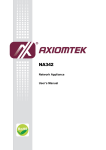
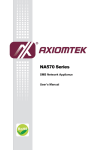
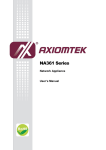
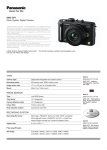
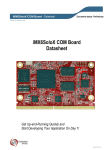
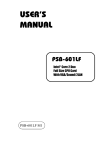

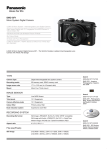

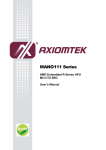

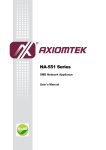

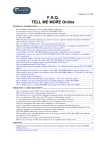

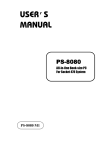

![Les Bienfaits de la Graine de Nigelle.pd[...]](http://vs1.manualzilla.com/store/data/006444170_1-a0347dafdf6b76cd272bb654279941d7-150x150.png)
